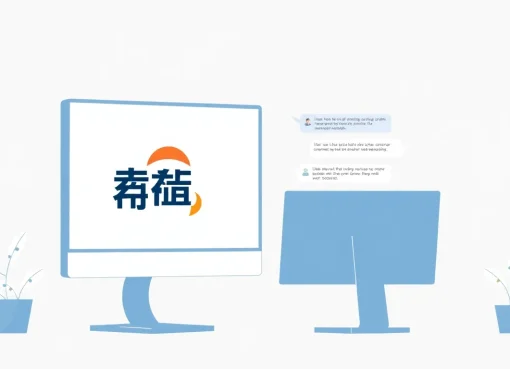Maximize Your Investment Potential with Essential Trading Tools

Understanding Trading Tools and Their Importance
In the fast-paced world of trading, having the right tools can mean the difference between success and failure. Trading tools are essential for making informed decisions, managing risks, and analyzing market trends. As the trading landscape continues to evolve, it is crucial to understand what these tools are, their benefits, and how they can enhance your trading strategies.
What Are Trading Tools?
Trading tools refer to software applications, platforms, and resources that assist traders and investors in executing trades, analyzing markets, and managing their portfolios. These tools vary widely in complexity and functionality, catering to different trading styles and preferences. Common types of trading tools include charting software, trading platforms, economic calendars, backtesting tools, and market news aggregators.
Benefits of Using Trading Tools
Utilizing the right trading tools can offer a multitude of benefits, including:
- Enhanced Decision-Making: Trading tools provide access to a wealth of data that can inform your trading decisions. By analyzing historical data and current market trends, traders can make better-informed choices.
- Improved Efficiency: Many trading tools automate specific tasks, such as order execution and notifications for market movements, freeing up traders’ time and allowing them to focus on strategy development.
- Risk Management: Effective trading tools include features designed to help manage risk, such as stop-loss orders, trailing stops, and position sizing calculators.
- Analysis and Insights: With access to advanced charting tools and analytical software, traders can evaluate different strategies and their potential performance before committing real capital.
Common Features of Trading Tools
Most trading tools come equipped with a variety of features designed to assist traders in their endeavors. Some common features include:
- Real-Time Data: The ability to access live market data is crucial for traders who need to make quick decisions based on current market conditions.
- Charting Capabilities: Advanced charting options allow for the analysis of price movements over various timeframes and patterns, aiding in technical analysis.
- Risk Assessment Tools: Many platforms include built-in calculators for determining risk-reward ratios, position sizes, and potential losses.
- Alerts and Notifications: Setting up alerts for specific market conditions can help traders act quickly on opportunities or avoid potential losses.
Types of Trading Tools Available
Various types of trading tools cater to different analytical methods. Broadly speaking, they can be categorized into technical analysis tools, fundamental analysis tools, and risk management tools.
Technical Analysis Trading Tools
Technical analysis involves the analysis of price movements and trading volumes to forecast future price actions. Tools geared towards technical analysis typically include:
- Charting Software: This allows traders to visualize historical prices and patterns, using various styles like candlestick or line charts.
- Indicators: Tools such as moving averages, relative strength index (RSI), and MACD help traders identify trends and market momentum.
- Backtesting Platforms: These allow traders to test trading strategies against historical data to gauge effectiveness before applying them in real-time.
Fundamental Analysis Trading Tools
Fundamental analysis focuses on economic indicators, company performance, and news events that affect market movements. Key tools include:
- Economic Calendars: These provide insights into upcoming economic events that may impact the markets.
- News Aggregators: Traders can use these to stay updated with real-time news that may influence their trading decisions.
- Financial Ratios Calculators: Useful for evaluating the financial health of companies, helping traders identify potential investment opportunities.
Risk Management Trading Tools
Effective risk management is crucial for long-term trading success. Trading tools that facilitate better risk management include:
- Stop-Loss and Take-Profit Orders: These tools automatically close trades at predetermined prices to minimize losses or secure profits.
- Risk Assessment Calculators: They help determine the appropriate position size based on account balance and risk tolerance.
- Portfolio Management Software: This helps traders monitor their open positions and overall portfolio performance to ensure alignment with risk management strategies.
How to Choose the Right Trading Tools
Selecting the right trading tools is critical for enhancing your trading performance. Here are some guidelines to consider:
Identifying Your Trading Style
Your trading style—whether day trading, swing trading, or long-term investing—should drive your choice of tools. Day traders may need real-time data and rapid execution capabilities, while long-term investors may prioritize comprehensive fundamental analysis tools.
Evaluating Tool Features
When assessing trading tools, consider their features against your specific trading needs. Look for software that provides:
- User-friendly interface for ease of navigation.
- Comprehensive resources for both technical and fundamental analysis.
- Customizable alerts and notifications based on your trading criteria.
Cost vs. Value of Trading Tools
While many trading tools require a subscription or one-time fee, evaluate their cost against the potential value they provide. Free tools might suffice for beginners, but as you advance, investing in robust platforms with additional features could yield significant returns.
Implementing Trading Tools Effectively
Once you’ve selected the right tools for your trading activities, effective implementation is key to maximizing their benefits.
Best Practices for Using Trading Tools
To harness the full potential of your trading tools, consider the following best practices:
- Regularly Update Software: Ensure your trading software is up to date for optimal performance and security.
- Stay Informed: Keep abreast of the latest developments in trading technology and adapt accordingly.
- Practice Patience: While tools can enhance performance, over-reliance can lead to impulsive decisions.
Integrating Trading Tools into Your Strategy
Effectively integrating tools into your trading strategy means knowing when and how to use each one. Some steps to consider include:
- Develop a systematic approach to using each tool based on your trading style.
- Combine various tools to complement one another, such as utilizing technical analysis alongside fundamental insights.
- Document trades and the tools used for reference and analysis to refine future strategies.
Monitoring Tools Performance
Regularly assess the performance of your trading tools to ensure they are delivering value. Set benchmarks for success, and consider factors such as:
- How effectively the tools help you achieve your trading goals.
- The accuracy of data provided and its impact on your decision-making.
- Adaptability of the tools to changing market conditions.
Future Trends in Trading Tools
The trading industry is continually evolving, with new technologies and methodologies shaping the future of trading tools.
Emerging Technologies in Trading
As technology advances, several trends are emerging in trading tools:
- Blockchain Technology: The rise of blockchain is influencing trading operations, particularly in asset tokenization and secure transaction methods.
- Advanced Analytics: Tools utilizing machine learning algorithms are becoming more prevalent, providing deeper insights into market movements and trends.
- Mobile Trading: The demand for mobile trading applications is growing, allowing traders to access the markets anytime and anywhere.
Impact of AI on Trading Tools
Artificial intelligence is poised to revolutionize trading tools by introducing more intelligent, autonomous functionalities. Potential impacts include:
- Adaptive trading strategies that can evolve based on real-time data and changing market conditions.
- Automated trading systems that combine multiple indicators and factors to execute trades more effectively.
- Enhanced prediction capabilities through the analysis of vast datasets, leading to informed decision-making.
Preparing for Changes in the Trading Landscape
To stay ahead in trading, it is essential to remain adaptable and open to new technologies. Consider participating in training programs or workshops that focus on emerging trends in trading tools, ensuring you are well-equipped to thrive in a changing environment.
In conclusion, trading tools are an indispensable component for traders looking to enhance their performance in the financial markets. By understanding the various types, evaluating their features, and implementing them effectively within your trading strategy, you can leverage these resources to maximize your investment potential.



Leave a Comment